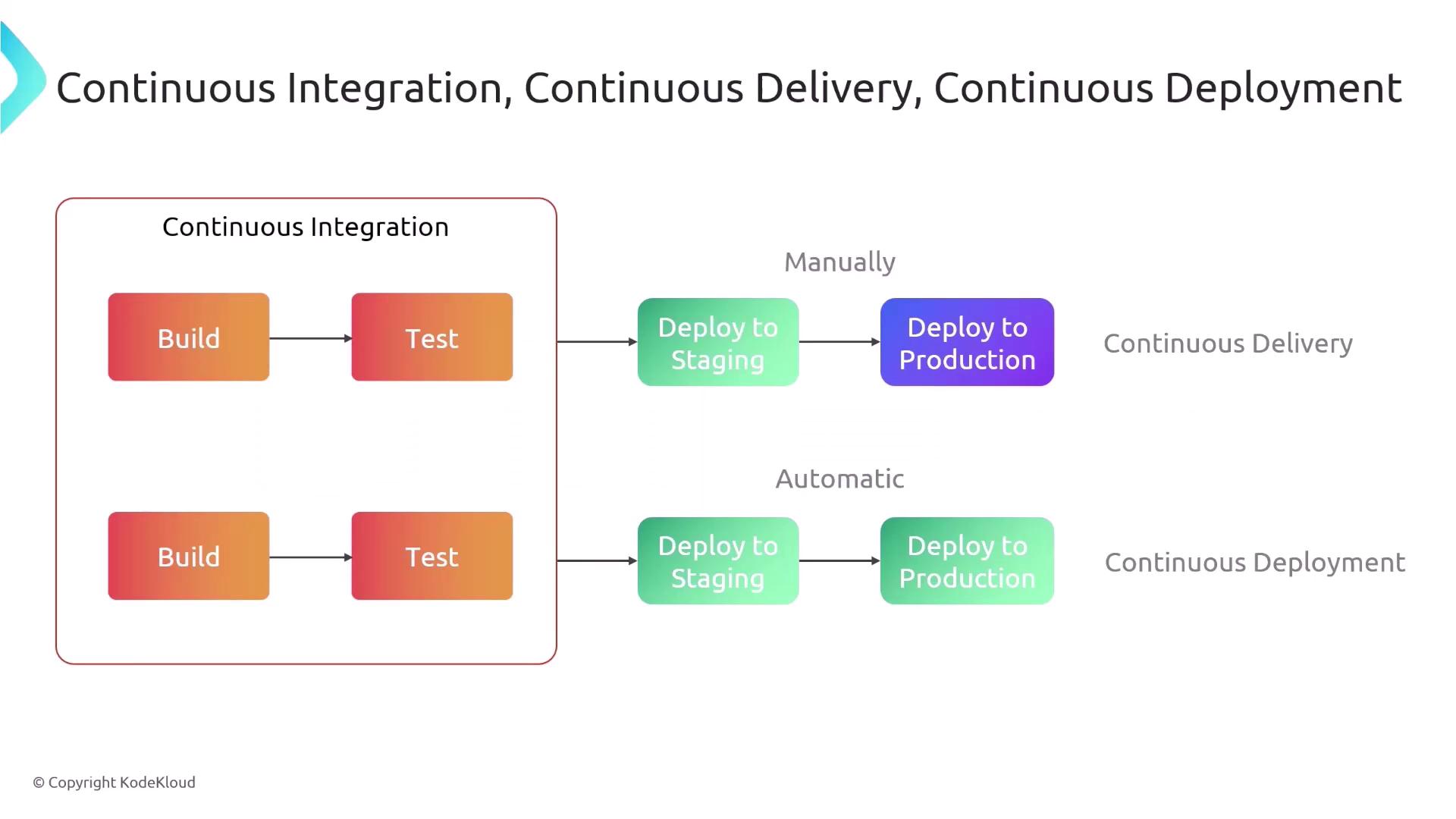Jenkins Project: Building CI/CD Pipeline for Scalable Web Applications
Jenkins
Continuous Integration Continuous Delivery Continuous Deployment
In this lesson, we explore three essential DevOps practices—Continuous Integration (CI), Continuous Delivery (CD), and Continuous Deployment (also CD). These practices streamline the process of integrating, testing, and releasing code, ensuring rapid and reliable software delivery. To simplify these concepts, we'll use a culinary analogy that illustrates how each practice contributes to the overall development process.
Continuous Integration
Imagine a bustling restaurant kitchen where several chefs work concurrently on different parts of a dish—chopping vegetables, preparing sauces, or seasoning. Similarly, in software development, developers frequently merge their individual code changes into a shared repository. Each change—whether it’s a bug fix, a security patch, or a new feature—is continuously integrated into the main codebase.
Just as the chefs taste their dish to verify its flavor balance, automated tests are executed each time code is integrated. These tests ensure that newly added changes do not break existing functionality. If a test fails, developers can quickly identify and correct the issue, much like a chef adjusting the seasoning before finalizing the recipe. This continuous cycle of integration and testing is the backbone of Continuous Integration, keeping your application in a reliable and deployable state.
Key Point
Continuous Integration helps maintain a stable codebase by automatically testing each code commit.
Continuous Delivery
After successful code integration and testing, the process moves to Continuous Delivery. Returning to our culinary analogy, picture the perfectly prepared dish being presented to the head chef for one final inspection. In a similar manner, once the integrated code passes all automated tests, it is promoted to a staging environment that closely replicates the production setup.
At this stage, a manual approval process is often in place—just as a chef gives the final tick before a dish is served. This additional step acts as a safeguard, allowing developers or managers to verify that everything meets the required standards before the code goes live. The manual intervention ensures that any potential issues related to configuration or performance are caught early.

Continuous Deployment
Continuous Deployment takes this process one step further by removing the manual approval gate. In this model, once code changes are integrated and successfully tested, they are automatically deployed to the production environment without any further human intervention.
Consider the analogy where, if the dish passes all the quality checks, it is immediately served to the customer without waiting for a final inspection by the head chef. This fully automated process minimizes delays, enabling rapid delivery of new features and fixes directly to end users.
Caution
While Continuous Deployment increases delivery speed and agility, it requires robust automated testing to ensure no faulty code is released to production.

Summary of Practices
| Development Practice | Key Process | Deployment Method |
|---|---|---|
| Continuous Integration | Frequent commits and automated testing | Ensures a stable and deployable codebase |
| Continuous Delivery | Staging environment with final manual approval | Code is deployed after thorough validation |
| Continuous Deployment | Fully automated pipeline after successful tests | Immediate release of changes to production |
In essence, these DevOps practices are designed to enhance software reliability and speed up delivery. By incorporating Continuous Integration, Continuous Delivery, and Continuous Deployment into your workflow, you enable a more efficient, agile, and robust development process.
For more insights into modern DevOps and continuous practices, explore additional resources like Kubernetes Documentation and Docker Hub.
Watch Video
Watch video content